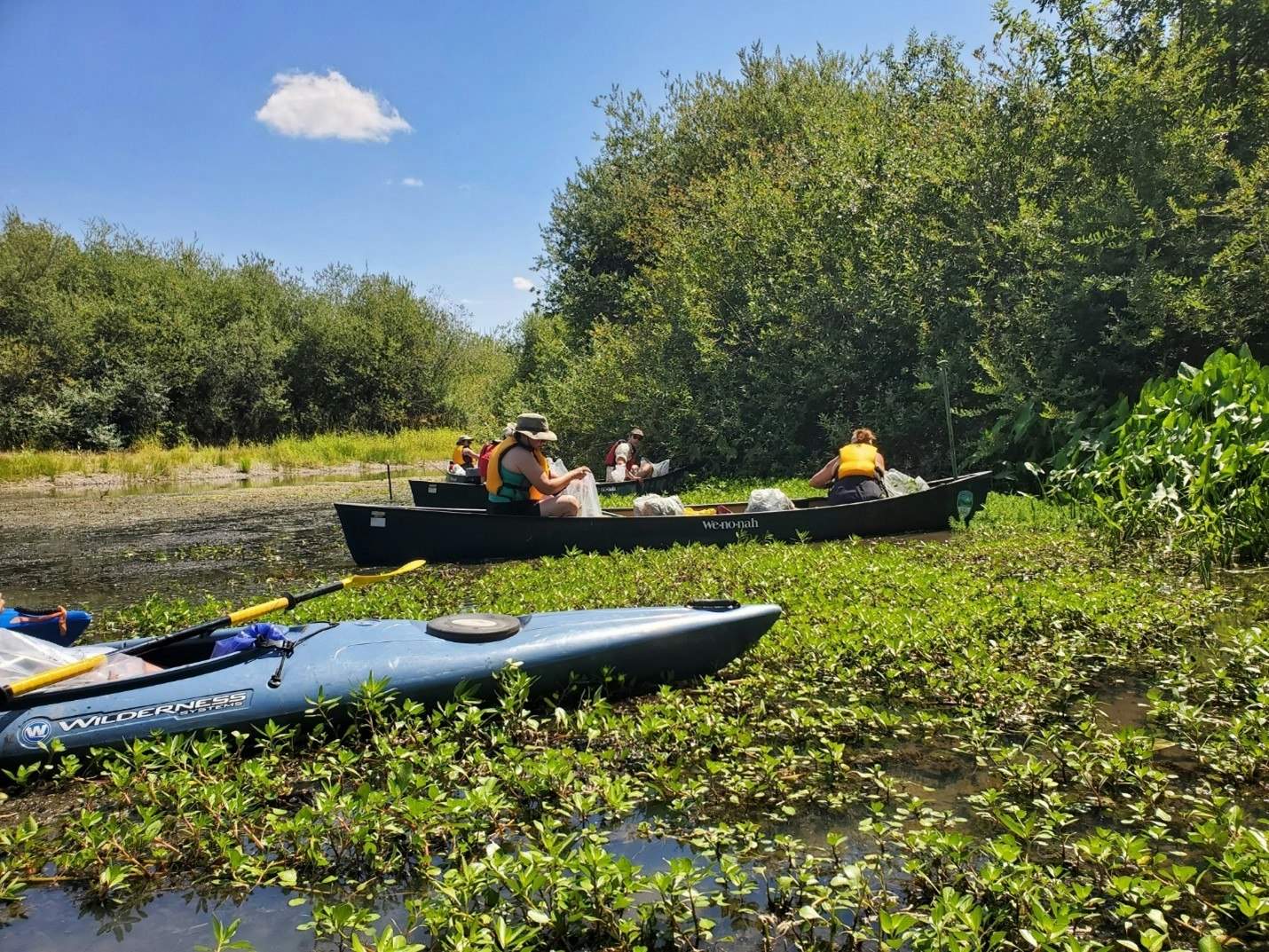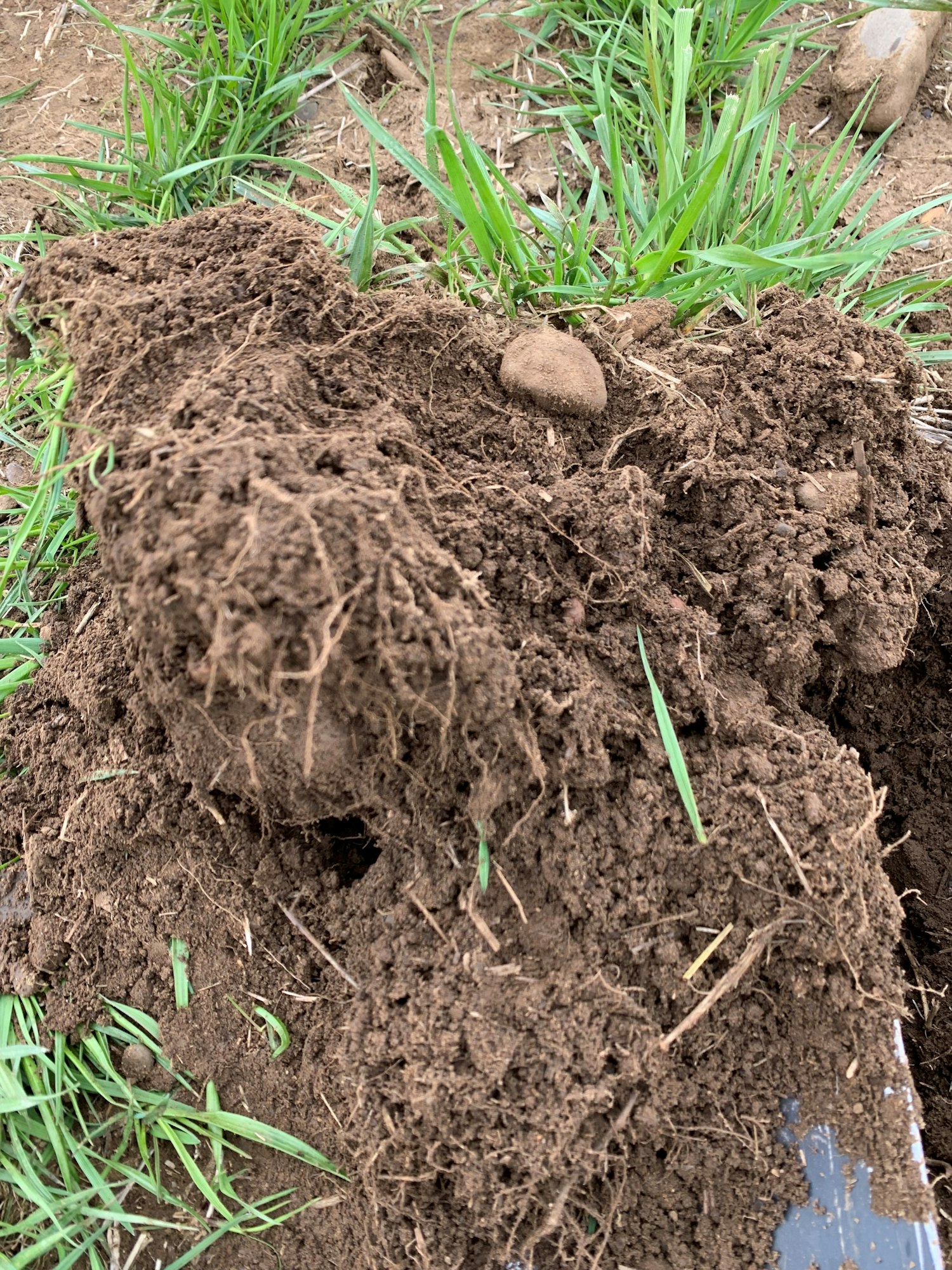Current Projects
We are conservation leaders in Benton County, involved in a number of projects to restore habitat and promote sustainability. Click the headings below to learn about some of our current projects.

This summer we’re working on aquatic invasive weed treatments on the Willamette River between Peoria Park Boat Ramp and Takena Landing in North Albany. Contractors and volunteers have dug in to help control yellow floating heart (Nymphoides peltata), water-primrose (Ludwigia hexapetala and peploides), and parrots feather (Myriophyllum aquaticum).
Actions and accomplishments:
- 2 volunteer “Paddle and Pull” events with more than 20 volunteers paddling the Willamette River in search of aquatic invasives to pull and remove from the river
- 2 survey days with Willamette Riverkeeper, Oregon Parks and Recreation Department, and Oregon Department of Agriculture mapping the locations of invasive weeds
- Two new yellow floating heart sites were discovered in early August, and contractors were on the river a few days later treating these weed populations
- In all, 10 sites are being treated for aquatic invasive weeds by volunteers and contractors
Check out the Willamette Mainstem Cooperative program here

In 2025, Benton Soil and Water Conservation District obtained another year of grant funding for their “Purge the Spurge!” project. This undertaking began as a response to four sightings of oblong spurge (Euphorbia oblongata) in Benton County in 2019. Oblong spurge is a high priority A-List noxious weed as designated by the Oregon Department of Agriculture. This designation means current infestation levels of oblong spurge in Benton County are at a low enough scale for feasible containment. These sites are treated with herbicide or mechanical removal. This project is made possible thanks to funding received from the Oregon State Weed Board and assistance from the Oregon Department of Agriculture Invasive Weed Program.
Actions and accomplishments in 2025 (so far):
- More than 100 sites in the Corvallis, Philomath, and Lewisburg areas are currently being monitored for oblong spurge.
- At least 55 homeowners this season have worked with Benton SWCD to have this plant removed.
- 42 postcards have been mailed to homeowners who are likely to have oblong spurge and 5 have called back and requested the plant be removed.
- 15 new sites have been confirmed through this outreach, 2 of which have come in via the Oregon Invasives Hotline.
.png?ixlib=rb-1.1.0&w=2000&h=2000&fit=max&or=0&s=321d1391ceb7262c98fdfc0a7d6edbc9)
Want to learn more? Watch this short video about this project!
The Willamette Valley has amazingly fertile, productive soils. Over the past two years, the Oregon Watershed Enhancement Board (OWEB) Technical Assistance Grant (#219-9001-19457) has allowed Benton SWCD to provide soil health tests to twelve famers in or near the Southern Willamette Valley Groundwater Management Area (GWMA).
We worked in 30 fields over about 750 acres. This includes a spectrum of local cropping systems: short-term perennial tall fescue in a rotation with beans, squash and wheat, pasture converting to market vegetables, row crops (pumpkin, corn, salad mix), blueberries, strawberries, hazelnuts, and other seed and grain crops (triticale, annual rye, clover) including cover crops. The project also funded 15 soil classification consultations by Red Hills Soils. Five interns participated in the field work.








.jpg?ixlib=rb-1.1.0&w=2000&h=2000&fit=max&or=0&s=69e4a9a946f1ad2a046dcc718c229423)
Oak habitats are some of the most imperiled habitats in the Willamette Valley eco-region. For years, Benton SWCD has worked with a number of private landowners to restore oak habitats.
In partnership with Natural Resources Conservation Service, landowners, Luckiamute Watershed Council, U.S. Fish and Wildlife, and Oregon Department of Fish and Wildlife, Benton SWCD is working on oak restoration project at J2E Tree Farm. J2E is a small woodlands operation located in the Upper Luckiamute River/Vincent Creek sub-basin in northern Benton County. Douglas fir trees are encroaching upon a corridor of Oregon white oaks, limiting its potential to provide critical habitat to Taylor’s checkerspot butterfly and other sensitive species.
This project proposes a "ridge-to-river" approach to enhance these important habitats and support a diversity of fish and wildlife. Douglas fir thinning and understory planting will restore a 16-acre oak corridor in close proximity to the Taylor’s checkerspot butterfly population in Beazell Memorial Forest. In all habitats, project partners will work to remove target invasive species and increase the diversity of shrubs and trees and increase the density and cover of appropriate native plants. The actions will promote pollinator habitat, improve wetland conditions, and restore and connect riparian corridors.
Read more about the J2E Project here!
Oregon is taking a coordinated streamside management approach to address priority water quality concerns and improve streams for fish and wildlife. The Oregon Department of Agriculture (ODA) and other state agencies, local partners and stakeholders are coordinating expertise, funding, and resources to improve water quality throughout Oregon. ODA’s Strategic Implementation Areas (SIA) initiative was selected to implement the coordinated approach.
The SIA process includes:
- Evaluating conditions on agricultural lands.
- Engaging landowners to address water quality concerns on their land.
- Monitoring to effectively evaluate outcomes.
Throughout the SIA process, ODA ensures compliance with Oregon’s Agricultural Water Quality Area Rules (Area Rules) by working with landowners where water quality concerns persist. SIAs Include Three Key Components:
1. Compliance with Oregon’s agricultural water quality program and regulations.
2. Voluntary, incentive-based conservation.
3. Monitoring to track water quality and land conditions.



